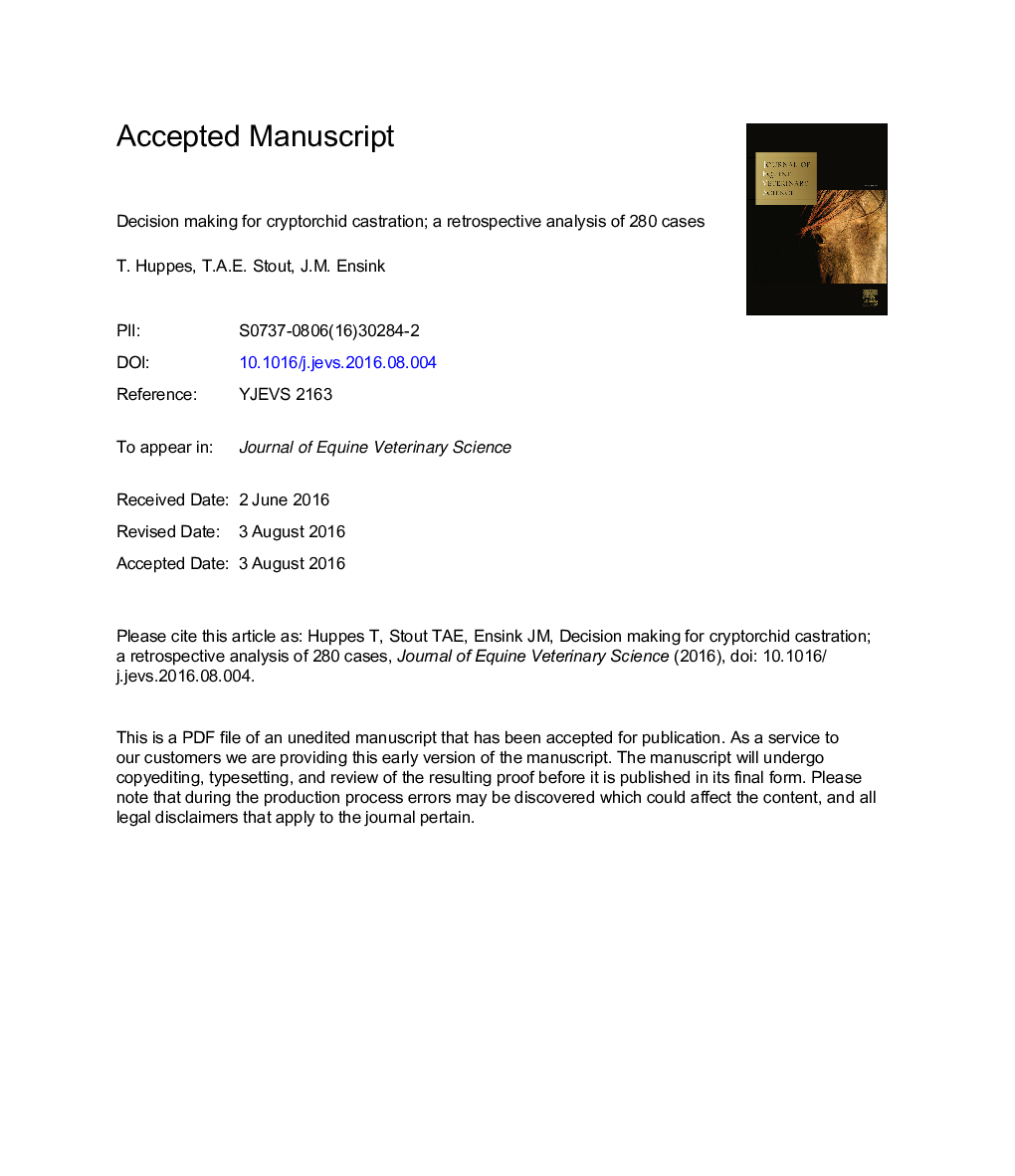| Article ID | Journal | Published Year | Pages | File Type |
|---|---|---|---|---|
| 5535717 | Journal of Equine Veterinary Science | 2017 | 34 Pages |
Abstract
The location of an undescended testicle influences the choice of surgical technique for efficient cryptorchid castration. We review a standardized protocol for preoperative examination to dictate surgical approach to cryptorchidism. Cases are split into two periods: 2004-2006 and 2007-2014. In 2004-2006, conventional cryptorchidectomy and laparoscopic cryptorchid castration (standing) were both offered, but the choice of technique was based primarily on owners' preference for a recumbent or standing procedure. In 2007-2014, ultrasonography was used to locate the testes and dictate the preferred surgical approach; for abdominal testes, laparoscopic intraabdominal spermatic cord ligation without orchidectomy was preferred and for inguinal testes, conventional open orchidectomy. The numbers of animals requiring a second procedure to complete castration were compared between the two periods. In addition, failure rates for individual testes grouped by location were determined separately for the different techniques, and the value of preoperative ultrasonography to locate the retained testes was assessed. In 2004-2006, 15.3% (20/131) of the cryptorchids needed more than one surgery to complete castration, compared to 0.7% (1/144) in 2007-2014. Failure rates for laparoscopic castration were 0/168 (0%) for abdominal, 3/40 (7.5%) for inguinal, and 9/55 (16.4%) for scrotal testes; for conventional castration, failure was recorded for 3/12 (25%) abdominal and 0/92 (0%) inguinal testes. For 94% (156/166) of retained testes, ultrasound-based preoperative advice on surgical approach was correct. Using a standardized preoperative examination to determine choice of surgical technique significantly (P < .001) reduced the number of second surgeries needed to complete castration. Preoperative ultrasound is therefore a useful aid to determining the surgical approach to cryptorchid castration.
Related Topics
Life Sciences
Agricultural and Biological Sciences
Animal Science and Zoology
Authors
Tsjester Huppes, Tom A.E. Stout, Jos M. Ensink,
